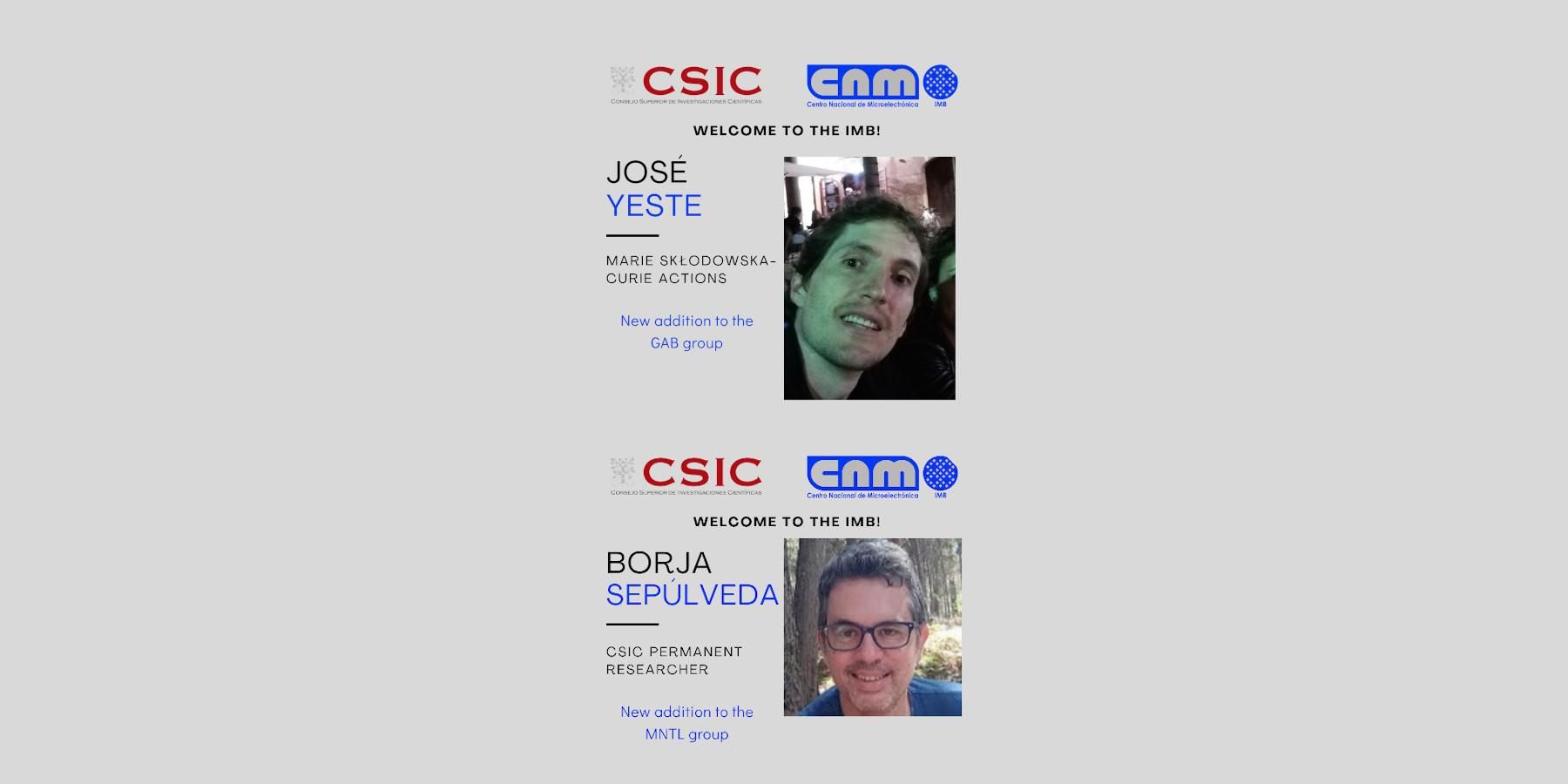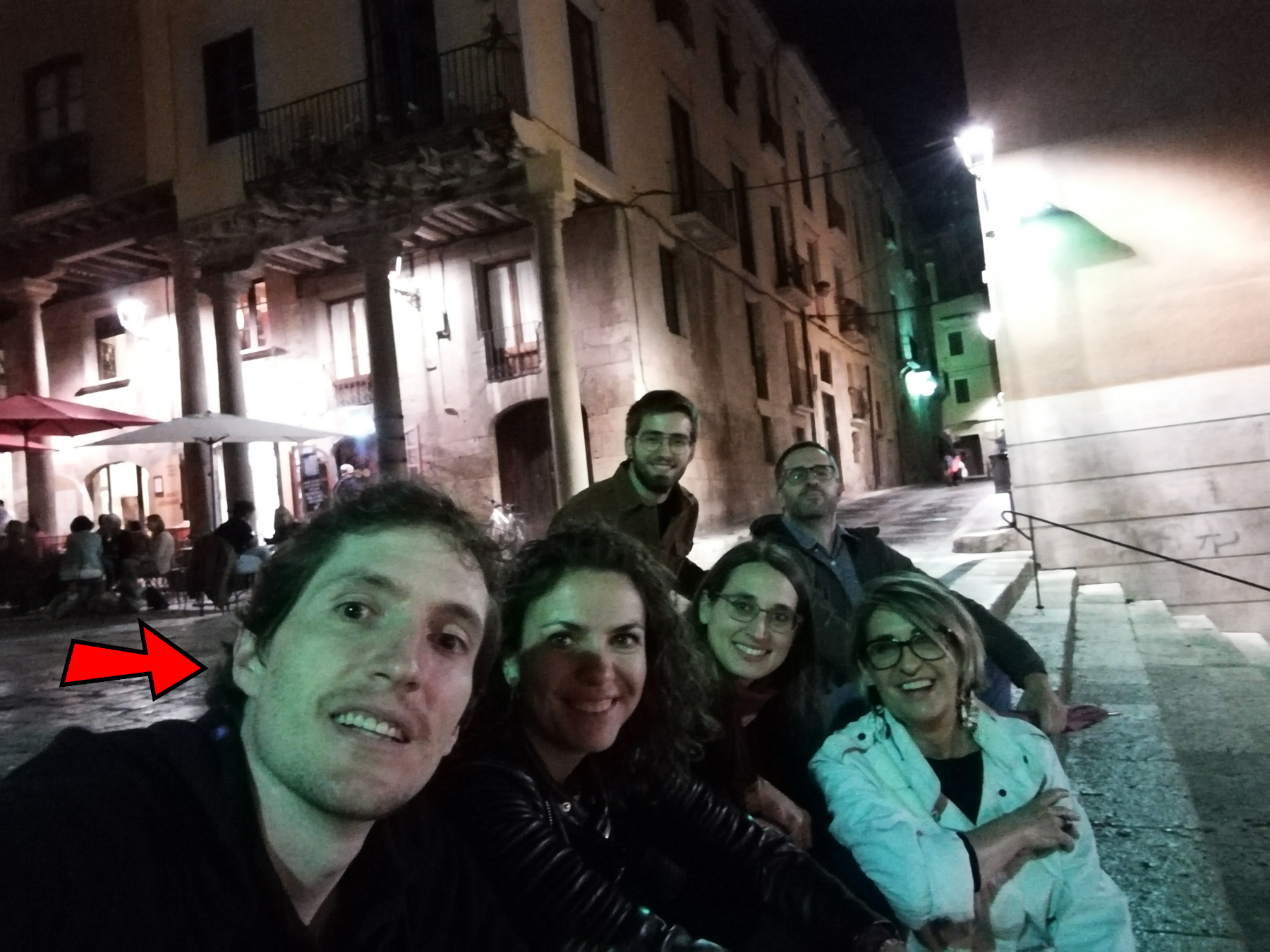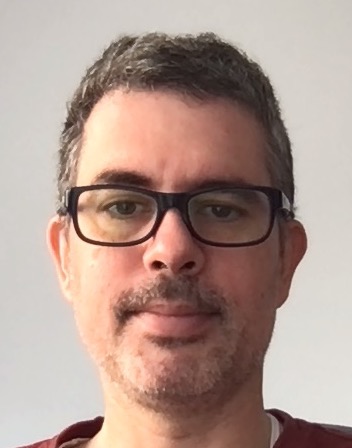Welcome José Yeste and Borja Sepúlveda, who are joining IMB-CNM as researchers
This April, we welcome José Yeste and Borja Sepúlveda as new researchers of the centre.

Welcome José Yeste!

His research focuses on the development of organ-on-a-chip technologies, and he has accumulated skills in nano- and micro-technologies, fabrication of microphysiological systems, and microfluidics. After a 1-year postdoctoral training at Institute for Bioengineering of Catalonia (IBEC), he is coming back to GAB, the Rosa Villa-led group, at IMB-CNM, as he has already developed research in her group.
As a MSCA fellow, he will join the Turner Lab at Brigham and Women's Hospital in Boston. For the next two years, he will seek to apply nanotechnology to analysis of transport mechanisms at the intestinal mucosal barrier. Using nanotechnologies available at IMB-CNM, he will develop an innovative technology to study the mechanism underlying transport regulation through claudin channels.
Yeste is a new member of the Group of Biomedical Applications. Welcome!
Welcome Borja Sepúlveda!

Dr. Borja Sepulveda received his PhD degree in Physics from the Complutense University of Madrid in 2005. His PhD research was carried out at the Microelectronics Institute of Madrid (IMM-CNM, CSIC). In 2006 he did a two years Postoctoral stay at the Bionanophotonics and Bioimaging group in Chalmers University of Technology (Göteborg, Sweden) and in 2008 he joined the Institut Català de Nanociencia i Nanotecnologia (ICN2) of Barcelona as Research Fellow, where he got a Ramon y Cajal grant in 2009. In 2012, he got a permanent CSIC researcher position at the ICN2, and now he is moving to the Microelectronics Institute of Barcelona (CSIC).
Sepúlveda has acquired a highly multidisciplinary experience, focused on the development of opto-magnetic nano systems for clinical and environmental control applications. In particular, he has acquired experience in very diverse fields such as: photonics and nanophotonics, nanomagnetism, magneto-plasmonics, nanofabrication, biosensing, nanotherapies, biofunctionalisation, and self-assembly.
His current research interests are related to the development of new active nanostructures that can be remotely controlled and actuated for applications in biomedicine and water remediation. In particular, he is focused on the design and fabrication of novel opto-magnetic nanostructures for combined optical and magnetic treatments and controlled drug delivery. He is developing opto-magnetic electro-chemically active nanostructures as therapeutic and water remediation agents. He is also doing development in new nanomaterials for wireless opto-magnetic stimulation of excitable cells.
Sepúlveda is a new member of the Micro and Nano Tools Group. Welcome!





